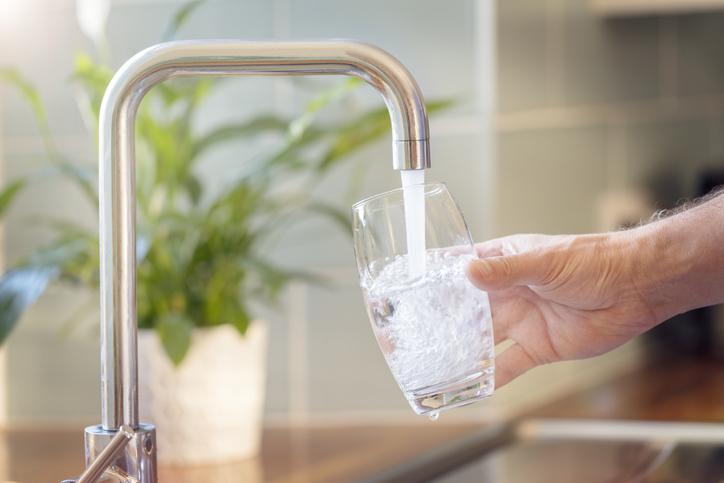
Most of us are probably aware of the dangers of lead, a toxic substance that can be especially harmful to children and pregnant women.
Exposure can cause abdominal pain, constipation, depression, nausea, and other symptoms, according to the Centers for Disease Control. Particularly high levels of exposure could cause anemia, weakness, and kidney and brain damage. Unfortunately, many times those symptoms don’t appear until after dangerous levels of exposure have already happened.
In 2015, the city of Flint, Michigan, made national headlines when it was revealed that nearly 100,000 residents were exposed after the city made changes to its drinking water source.
Lead and plumbing go way back: The word plumber actually comes from the Latin word plumbum, which means lead. The CDC says the most common sources of lead in drinking water are pipes, faucets, and plumbing fixtures, especially those made before 1986.
So how concerned should you be about lead in your pipes? Here are some things you should know.
Legislation to Reduce Contamination
In ancient times, the Romans used the substance for water pipes because it was inexpensive and reliable, according to the Environmental Protection Agency. “The result, according to many modern scholars,” wrote Jack Lewis, a former editor with the EPA Journal, “was the death by slow poisoning of the greatest empire the world has ever known. Symptoms of "plumbism" or lead poisoning were already apparent as early as the first century B.C.”
However, in modern times, legislators have passed laws aimed at reducing lead contamination. For example, the Clean Water Act and the Safe Drinking Water Act regulate the amount of lead allowed in water.
In 2011, Plumbing Manufacturers International pushed for the Reduction of Lead in Drinking Water Act, aimed at reducing lead in certain plumbing features from 8 percent to a maximum of 0.25 percent weighted average. President Barack Obama signed this into law in 2014.
According to the CDC, lead in water can come from lead pipes that connect a water main to your home (also known as a service line.) Or you could still have household plumbing that’s soldered with lead – which can get into your drinking water when plumbing materials corrode.
READ MORE: Do You Know What Your Pipes Are Made Of?
How Will I Know If My Water Is Contaminated?
You can’t see, smell, or taste lead in drinking water. Your water provider can tell you if you have a lead service line going into your house, and if so, what programs are available that can help you remove it.
Many public water systems will also test your water for you if you ask.
The EPA also requires all community water systems to deliver an annual water quality report known as a Consumer Confidence Report to their customers every July 1. Here’s how you can find your local report. If you have a well or your water comes from another private water supplier, contact your local health department for more information.
How to Reduce Lead in Your Drinking Water
In addition to having your water tested for lead and learning what your service line is made of, follow these additional tips from the EPA:
- Run your water. Before drinking, flush your home’s pipes by running the tap water, taking a shower, doing laundry, or doing a load of dishes. The amount of time to run the water will depend on whether your home has a lead service line, and if so, how long it is. Contact your water utility for recommendations about flushing times in your community.
- Stay informed on construction in your neighborhood. Construction may cause more lead to come out of a service line.
- Use cold water for drinking, cooking, and making baby formula. Lead dissolves more quickly into hot water, and boiling water doesn’t remove it from water.
- Clean your faucet’s aerator. Sediment, debris, and lead particles can collect in your aerator, which can contaminate your water.
- Use your water filter properly. Make sure your filter is certified to remove lead. Check out NSF International for some options. Read the directions carefully to learn how to install and use your cartridge and when it’s time to replace it. Don’t run hot water through the filter.
Benjamin Franklin Plumbing is also here to help you evaluate your drinking water and advise you on next steps. Contact us online or call us at 1-877-BEN-1776.
